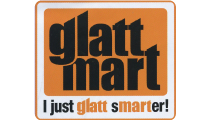As a panelist for Jewish Values Online, I am asked to weigh in on various values-based questions from the perspective of a Conservative rabbi. A recent question I was asked to respond to was odd in that it wasn’t a question that had to do with values. I was asked to answer the difference between “glatt kosher” and “kosher”. This struck me as having to do less with values and more with a general misunderstanding.
Literally speaking, the term “glatt” is a Yiddish word that means smooth (it is called “chalak” in Hebrew). It is used most commonly as a kosher designation referring to the lungs of an animal. If the animal’s lungs were smooth and free of any adhesion that would render it non-kosher, the animal is designated as “glatt.” The term only applies to kosher animals whose meat can be eaten (not fowl or fish). Therefore, kosher food like chicken, fish, lamb, or dairy products can never be “glatt.”
The term has come to mean “kosher to a higher level” leading many people to erroneously think that non-beef food items can be “glatt.” In fact, I have been asked if pizza that I certify as kosher is “glatt” to which I responded that if they’re concerned about the melted cheese atop the pizza being smooth, they should be fine.
Rabbi Ari Z. Zivotofsky wrote an insightful explanation of why the “glatt” designation is important. He explains, “In colloquial discourse treif refers to anything that is not kosher. The technical definition of treifa is based on Exodus 22:30 (Do not eat meat from an animal torn [treifa] in the field) and refers to an animal with any of a specific group of physical defects that are detailed in the Talmud. Examples of these “defects,” which often go far beyond the health inspection of the USDA, include certain lesions, lacerations, broken limbs, missing or punctured organs, or the result of an attack by a larger animal. Such defects can occur in and thereby render both animals and fowl treif. Because most of these defects are uncommon, it may be assumed that most animals are healthy and hence there is no requirement to inspect every animal for them. An exception is the lung of an animal, on which adhesions and other problems may develop. While these problems are not common, they do occur more frequently than other treifot. Their relative prevalence led the rabbis to mandate that the lungs of every animal be examined, both manually while still in its natural position in the animal, and visually following its removal from the thoracic cavity.”
Most types of adhesion on the animal would make the animal a treifa and therefore forbidden to be eaten by a Jewish person. Rabbi Moshe Isserles (the Ramah) allows for a method of peeling and testing many types of adhesions, which results in many more animals being designated as kosher. This leniency allows kosher observant individuals to eat meat that is not from a “glatt” animal, but one whose adhesions had been checked through peeling and testing. Isserles ruled only for Ashkenazi Jews, but Rabbi Yosef Karo did not rule that this was acceptable practice and therefore his Sephardic followers only eat “glatt” kosher meat.
This led to the “glatt” designation being considered a stringency that the pious would uphold. The misconception is that if meat is not “glatt” then it is not kosher. In truth, non-glatt meat that has been thoroughly inspected is considered fully kosher for Ashkenazic Jews.
There are kosher certification agencies that only certify meat that is “glatt”. Those who only eat “glatt” meat are known as mehadrin, meaning “embellished.” Maintaining a kosher diet leaves froom for leniencies and stringencies. One who follows a more stringent level of kosher observance is considered to have embellished God’s commandments and thus is said to be keeping kosher l’mehadrin. The terms “glatt” and “mehadrin” have come to describe a higher level of kosher status, but has also been misapplied to such things as water.

